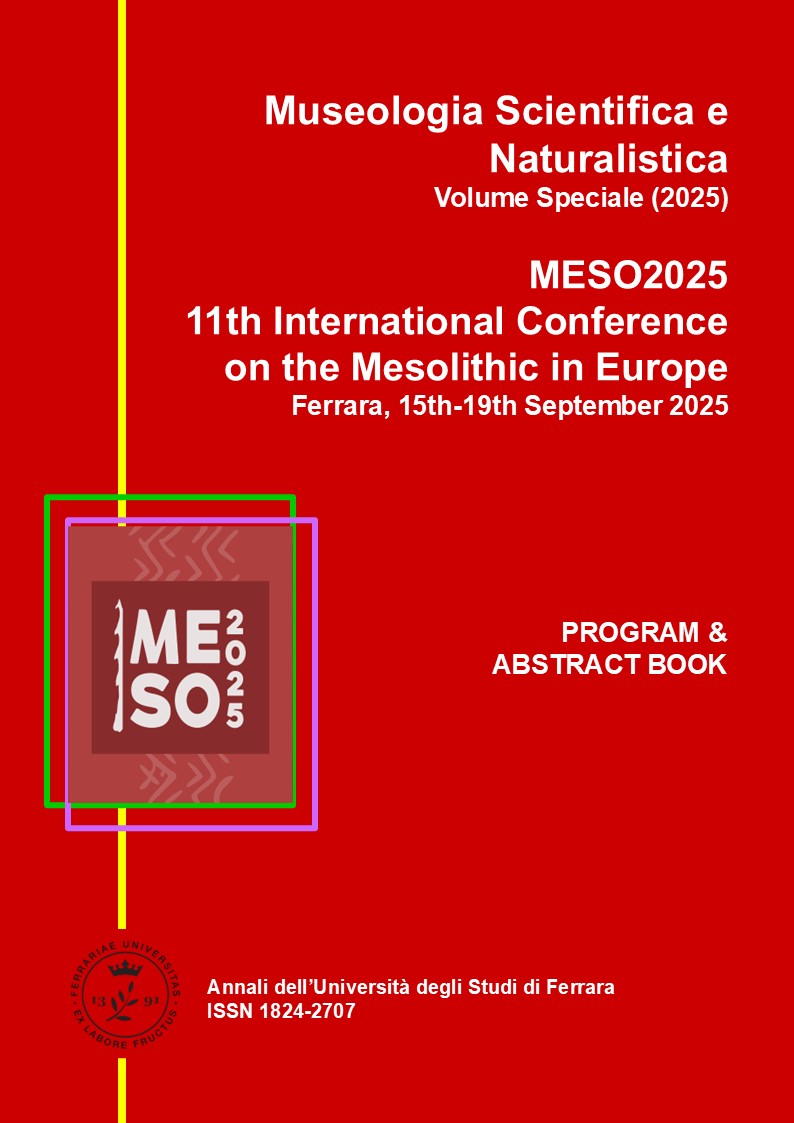MESO2025 - Session 5. People and places
Coordinated by Philippe Crombé and Caroline Posch
DOI:
https://doi.org/10.15160/1824-2707/3085Abstract
Prehistoric as well as modern humans form an integral part of the landscapes which they inhabit. Likewise, Mesolithic people lived and moved within their environment; they established, and abandoned campsites – often repeatedly in the same location; they hunted and exploited the faunal, botanical, and geological resources available to them; and when moving on to other regions, they took objects along with them, sometimes over hundreds of kilometres. However, as humans are space-acquiring beings with a tendency towards territoriality, movement and contact between regions and groups might not always have been unhampered but possibly at times restricted to a lesser or larger extent.
But how can questions regarding Mesolithic territoriality and perceptions of space be tackled? And how is the interaction of people with their local environment as well as the interconnectedness with other regions and groups on a supra-regional scale visible in the archaeological record of Mesolithic sites?
Within this session, we invite contributions which deal with the reconstruction of Mesolithic landscape usage. We invite theoretical and practical papers dealing with e.g. the detection of sites in the landscape (e.g., survey, remote sensing, predictive modelling, geophysical survey); reconstructions of supra-regional contacts and territoriality (e.g., GIS-modelling, typological/taxonomic analysis, network analysis); raw material management with special focus on lithic resources (e.g., sourcing and regional to supra-regional distribution); analysis of settlement systems (e.g. site function, site location, persistent places / ancestral places).



